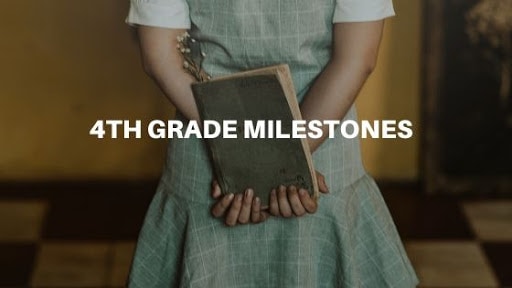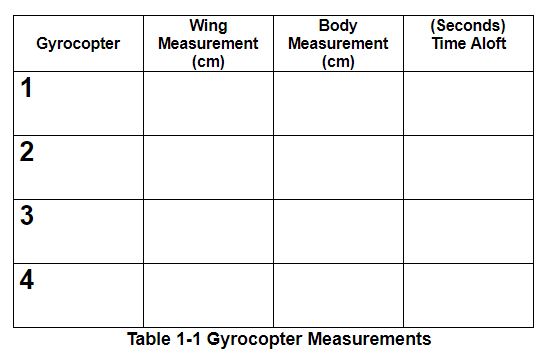By Dawn Michelle Michals
It’s time to homeschool 4th grade! You and your nine year old are gearing up for a great school year. Whether you’ve been homeschooling since pre-K or this is your first year, you are in the right place!
We have compiled everything you need to get started homeschooling 4th grade and keep you on track. Competencies, developmental milestones, field trip ideas and more are included below.
Homeschooling curriculum in the state of Texas must include the five basic subjects of reading, spelling, grammar, mathematics and good citizenship. Science, history and social studies are also included below for you.
Not in Texas? Check out state requirements for homeschooling fourth grade in your state.
By this age, your fourth grader is probably beginning a period of growth spurts, her appetite is increasing, and she needs a lot more sleep. Your child may also be experiencing some hair growth and oilier skin, and may be confused by all these bodily changes. You may notice some clumsy moments while your child adjusts to his growing and changing body. A longer attention span and growing interests means your child may start collecting items or decide on a hobby.
Suggested School Supplies for Fourth Grade

- Pencils
- Pencil sharpener
- Eraser
- Pens
- Lined paper, spiral notebooks, and/or composition notebooks
- Binders (if needed)
- Folders
- Colored pencils
- Highlighters
- Paints (tempera and watercolor)
- Paintbrushes
- Paper for painting
- Construction paper
- Whiteboard
- Dry erase markers
- Ruler
- Protractor
- Children’s scissors (sharp)
- Glue sticks
- White glue
- Tape
- Math manipulatives
- Sight word flash cards
- Math flash cards (ex. multiplication tables)
- Bookmarks (for longer books)
- Globe
- Wall maps of the world and the United States
- Library card
4th Grade Milestones by Subject

4th Grade Language Arts
- Decodes unknown words using phonics and context clues
- Determines the main idea of a story
- Identifies basic parts of a story (Setting, characters, plot, etc.)
- Relates text he has read to itself and other texts
- Able to summarize a story orally or in writing
- Able to identify genre (realistic fiction, historical fiction, fantasy, non-fiction, etc.)
- Easily identifies parts of speech
- Spells frequently used words and fourth grade spelling words correctly
- Ready for oral presentations
- Participates in discussions
- Able to follow both written and oral directions.
4th Grade Writing Skills Checklist

- Writes legibly in print and cursive
- Able to write different types of sentences: declarative (“That apple is red.”), interrogative (“Can my friend come over after school?”), and exclamatory (“I love homeschooling!”)
- Writes in complete sentences with capital letters and ending punctuation marks
- Able to edit for capitalization and punctuation
- Writes to express feelings, tell stories and summarize information
- Responds to comprehension questions using complete sentences
- Able to vary sentence structure
- Able to identify the parts of speech
- Spells frequently used words and fourth grade spelling/vocabulary words correctly
- Writes for different purposes and is becoming familiar with different forms of writing (expository, descriptive, persuasive and narrative)
- Able to write a three-paragraph story (non-fiction or fiction) with a clear beginning, middle and end.
4th Grade History and Social Studies
- Understands the origins, similarities, differences, government, and basic economic activities of Indigenous American groups in Texas and North America before European exploration
- Understands the importance of the Texas Revolution, the Republic of Texas and the annexation of Texas to the United States
- Understands the political, economic, and social changes in Texas during the last half of the 19th century and the 20th century, including the impact of the Civil War and Reconstruction in Texas, important public figures, and World Wars I and II
- Able to research a topic by using the table of contents, glossary and index of a source as well as keyword internet searches to locate information
- Describes and explains variations in the physical environment, including climate, landforms, natural resources and natural hazards
- Able to use geographic tools to collect, analyze and interpret data such as grid systems, legends, symbols, scales, and compass roses, able to construct and interpret maps
- Able to translate geographic data, population distribution, and natural resources into a variety of formats (such as graphs and maps)
- Understands the different regions in Texas (mountains and basins, great plains, north central plains, and coastal plains) and the United States as well as identifies and compares how people in different regions adapt to or modify the physical environment in which they live
- Understands the contributions of people of various racial, ethnic and religious groups to Texas
4th Grade Math Checklist
- Adds, subtracts, multiplies, and divides multi-digit numbers accurately
- Able to add and subtract decimals
- Multiplies and divides numbers zero to 10 automatically
- Compares and orders integers from 100 to 1,000,000,000 and decimals to the thousandths
- Solves and creates word problems using a variety of operations (addition, subtraction, multiplication, and division)
- Interprets remainders correctly in division word problems
- Uses data to support a conclusion when answering an open-ended question
- Increases in ability to estimate various lengths and measures to the nearest one-quarter inch and one-half centimeter
- Interprets an analog clock to the nearest minute and is able to verbally state the time in a variety of ways (10 ‘til, quarter after, etc.)
- Understands coin values in relation to the dollar (10 dimes = $1) and is able to add and subtract money
- Collects and organizes data to create various graphs and tables and is able to analyze data using statistical landmarks (maximum, minimum, range, median and mode)
- Begins to understand the fundamentals of personal finance literacy, including fixed and variable expenses, the purposes of financial institutions, and can describe how to allocate a weekly allowance among spending, saving and sharing.
4th Grade Science Experiments and Skills

- Able to organize, examine, and evaluate data using current technology and tools
- Able to measure, compare, and contrast physical properties of matter, including mass, volume, states (solid, liquid, gas), temperature, magnetism, and the ability to sink or float
- Understands the impact of science and technology on our past, present and future
- Understands the differences between the different forms of energy (mechanical, sound, electrical, light, and thermal).
5 Fourth Grade Science Experiments
What better way to enhance understanding of our natural world than to incorporate science into your fourth grade school day? Here are five fun and easy experiments for you and your budding scientist:
- Soil pH: Acid or Alkaline?
- Solve the Mystery! Which powder is which?
- Dominoes and Robots! Creating a domino effect with educational robots
- Create Your Signature Scent! How to make perfume
- Observe the weather with your own DIY rain gauge
Bonus Experiment: A New Spin On Flight
This experiment is taken from “25 STEMulating Activities for Future Scientist, Techies, Engineers and Mathematicians” by Robert Roach. If you enjoy this experiment, purchase the entire book with experiments for all 12 grades!
Rationale:
You are an aeronautical engineer. Your job is to design a gyrocopter which will meet the guidelines of your company. You may decide on other guidelines later, but for today we will be designing a gyrocopter which must stay aloft for long periods of time. Look for patterns and designs. Are you ready? Then let’s get busy.
Here is the basic design for the gyrocopter. Remember you are to design one that will stay aloft for the longest period, so modify the basic design given below to obtain the longest flight.

Supplies:
- Paper
- Scissors
- Centimeter ruler
- Stopwatch
- Pencil
- Data charts
Activities:
- Now you will need to look at patterns. Let’s measure the parts of the gyrocopter. Using your centimeter ruler, find the length of the wing from tip to tip. Record that measurement to the nearest centimeter on your table (Table 1-1).
- Next measure the body of the gyrocopter from bottom of the wing to end of the body. Record this measurement on the table (Table 1-1). Now, construct the gyrocopter. When you have finished, fly the copter. Use the timer to find out how long it took each gyrocopter to reach the ground. Record this on your table (1-1). Think of and list some things you could change to give it more time in the air.
- Making a record of the changes that you can make will help you build a gyrocopter which should stay in the air the longest. Scientists always work with other scientists or read the past work of other scientists. Working with others allows you to use everyone’s creativity to solve a problem.
- You can probably see that the wing and body lengths should be something you could change or manipulate. You could make one longer, shorter or the same. Try these changes to the wing and the body. Record this on number two of your table. Do you see a pattern? Keep experimenting until you develop a copter which stays in the air longer than your initial construction. What can you change to improve your gyrocopter?
Experimenting with these changes is what scientists call making a hypothesis. From this hypothesis, you can discover the best design for your gyrocopter. Once you make changes to your design, the results will give you information to decide on the best design to keep the gyrocopter aloft the longest.
The best design will be your conclusion. Your conclusion will either support your hypothesis or show it to be false. A false hypothesis does not mean your project was wrong. It just means you need to try something else.
What are some other parts of the gyrocopter that could be changed or manipulated? Try these on your own. Set up a table and try them out either in class or at home.
4th Grade Good Citizenship Lesson Plans

Being a good citizen not only means understanding your right to vote and the privileges of citizenship, but also respect for our planet, good stewardship and understanding the world around us. If you are in need of resources and lesson plans to fulfill this requirement, consider joining THSC.
We offer our “Lone Star Study” guide as a free download for our members.
Here are a few ideas:
- Become involved in events and initiatives such as Capitol Days sponsored by THSC.
- Learn about the electoral process in local, state and national elections.
- Register to vote and vote! Take your child with you to see the process. Children under the age of 18 are allowed to go with you and even go inside the booth with you in every state in the United States.
- Write a letter to your elected officials in support or against legislation affecting lives within your community. Start a letter-writing campaign to get others involved!
- Attend city council meetings and discover the workings of your town.
- Volunteer at a food pantry, animal shelter or other organization (many places allow younger children to participate with a parent).
- Learn about local and national non-profit organizations and how each serves your community (such as the United Way or the Boys and Girls Clubs of America).
- Attend rallies of causes you believe in as a family.
- How is your town significant in Texas history? Find out! Visit the library or chat with a local historian.
- Learn the words to “Texas, Our Texas” and discover the meaning and history of the Pledge to the Texas Flag and the Pledge of Allegiance.
- Discover how each of us affects the environment from how much water we use to how much trash we produce. Then, discuss and implement ways you as a family can lessen your impact.
- Learn about recycling like where and how you recycle items in your community.
- Keep our state clean by picking up litter everywhere you go.
- Did you know that flags from six nations have flown over our state? Learn which countries played a role in our history and why.
9-Year-Old Developmental Milestones

All children develop at different rates. However, certain skills are easily identified by the age of nine. If you have concerns about your child’s development after reviewing this list, please discuss those with your healthcare provider.
9-Year-Old Gross Motor Skills
- Uses one hand and foot much better than the other (“Right/left dominance” starts at around age seven and is set around age 10)
- Rides a two-wheel bicycle
- Shows increased body awareness (and boys may start activities to increase muscle mass)
- Shows increased awareness of physical skills and is able to coordinate movements (like dribbling and shooting a basketball or martial arts)
- Complains of growing pains or muscle cramps
- Develops hand-eye coordination quickly (this is the time when you might notice your child needs glasses!)
9-Year-Old Fine Motor Skills
- Manual dexterity increases
- Able to fasten a clasp and string beads
- Uses scissors accurately and is able to follow curved lines
- Uses table utensils properly; able to cut food with a knife and fork independently
- Writing is fluid and less of an effort
- Writing speed increases.
4th Grade Language Development and Comprehension
- Delivers messages clearly and confidently
- Asks relevant questions
- Uses complex sentences and different types of sentences to express ideas clearly
- May be uncertain about changes happening in his or her body due to puberty
- Has a deeper understanding of how relationships with others can include more than just common interests
- Has a first crush or pretends to have crushes to fit in with peers
- Able to resolve social problems (like fights) with friends and siblings
- Begins to understand others’ points of view
- Sense of what is important is influenced more by friends
- Enjoys being part of a team, group or club
- More aware of others’ perceptions
- Are kind, silly and curious, but also can be self-involved, moody and disrespectful
- May test out new attitudes, clothing styles, and mannerisms while figuring out where and how to fit in with people.
4th Grade Homeschool Reading List (10 Great Books)

Find these books at your local library or find them at any bookstore. If you shop on Amazon, please visit Amazon Smile and choose Texas Home School Coalition as your charity of choice!
We also recommend checking with a site such as Redeemed Reader or Plugged-In as to the appropriateness of any particular book for your child and their personal maturity level.
Another wonderful place for book recommendations is The Read-Aloud Revival, which features booklists and reviews for all kinds of books and reading levels.
- “American Girl” historical series by various authors. From Kirsten showing your student what life was like for Swedish immigrants to America all the way to Molly helping students understand the true meaning of patriotism, the “American Girl” series puts students into the lives of different characters with strong values. Valerie Tripp’s novels are the most recommended.
- Number the Stars by Lois Lowry shares the story of the Danish Resistance, who smuggled almost all of the Jewish population of Denmark to the shores of Sweden during German occupation in World War II. “The heroism of an entire nation reminds us that there was pride and human decency in the world even during a time of terror and war.” Told through the voice of 10-year-old Annemarie.
- From the Mixed-up Files of Mrs. Basil E. Frankweiler by E.L. Konigsburg tells the story of Claudia Kincaid and her little brother Jamie as they run away and live in the Metropolitan Museum of Art in New York City. When a mysterious statue shows up that may have been created by Michaelangelo, Claudia is on the case to solve the mystery!
- “The American Adventure Series” by Colleen L. Reece is the first series of several that follows generations of a family from the Mayflower until the 1900s. Bringing the best of historical fiction and God’s sovereignty together, these adventurous books will have your fourth grader begging for more!
- The Secret Garden by Frances Hodgson Burnett is the beloved story of orphaned Mary Lennox as she comes to live at her uncle’s great house on the Yorkshire Moors. The mysterious mansion has nearly one hundred rooms. The gardens surrounding the large property are Mary’s only escape. Then, Mary discovers a secret garden, surrounded by walls and locked with a missing key. With the help of two unexpected companions, Mary discovers a way in—and becomes determined to bring the garden back to life.
- The Birchbark House by Louise Erdrich is the first book in a five-book series about a young girl named Omakayas and her Ojibwe community beginning in 1847 near present day Lake Superior. This indigenous juvenile realistic fiction novel received rave reviews and was a 1999 National Book Award Finalist for young people’s fiction.
- Pollyanna by Eleanor H. Porter tells the story of suddenly orphaned Pollyanna who is sent across the country to a small town in Vermont, where she will live with her strict Aunt Polly. But Pollyanna doesn’t seem to notice how stern and unfeeling her aunt really is. When feeling unhappy, she simply plays her “glad” game—finding a silver lining in every cloud. Eventually, Pollyanna brightens the lives of everyone in town
- The Borrowers by Mary Norton tells the story of The Borrowers – the Clock family: Homily, Pod, and their fourteen-year-old daughter, Arrietty, to be precise—are tiny people who live underneath the kitchen floor of an old English country manor. All their minuscule home furnishings, from postage stamp paintings to champagne cork chairs, are “borrowed” from the “human beans” who tromp around loudly above them. All is well until Pod is spotted upstairs by a human boy!
- The Cricket in Times Square by George Selden, illustrated by Garth Wiliams. “The story of a musical cricket and his friends, a mouse and a cat of real character, who took up their abode in a Times Square newsstand . . . Most appealing whimsy with beautiful illustrations by Garth Williams.” – School Library Journal, Starred Review
- The Hundred Dresses by Eleanor Estes won a Newbery Honor in 1945 and has been continuously in print ever since. Wanda claims she has 100 dresses at home, but everyone knows she’s doesn’t since she wears the same faded blue dress to school every day. Her classmates bully her mercilessly until one day Wanda is pulled out of the school. It is now too late for apologies, but one classmate, Maddie, decides she is “never going to stand by and say nothing again.”
10 Awesome Homeschool 4th Grade Field Trips

Everyone loves a field trip! Don’t feel you have to leave your town or your own neighborhood to enjoy one. Be creative and your next excursion down the street can be an educational experience.
- First Responder Appreciation: Police, fire and EMS stations are located throughout most cities. Locate the one closest to your house and make a connection. Tour a fire station, talk to a police officer or reach out to an emergency medical technician and find out what it truly means to be a first responder.
- Government: THSC Capitol Days are one-day, hands-on events that allow homeschooling families to fully participate in the state legislative process. These events give the opportunity to defend the rights of homeschool families in Texas, meet representatives and staff and actually help pass a law. A free grade-specific tour is available at our Texas state capitol, which includes history, architecture and the legislative process.
- Job Fair: Visit a farm, watch a lawyer in court, chat with a pastor or priest or cook alongside a chef. Electricians, college professors, nurses and more are available to show you the ins and outs of their careers and help guide an eager learner on a possible career choice.
- Historical Sites: Bring your homeschool studies to life by visiting the places you are learning about each day. That’s the freedom of homeschooling! Discover places close to home or go on a tour through Texas and learn along the way.
- Museums: Name it and we have it as a museum in Texas! Fair Park offers four museums and gardens all in one place! You can also stroll through its 277 acres just east of downtown Dallas and check out the famed Art Deco architecture and sculptures of this “only intact and unaltered pre-1950s world fair site in the United States.”
- Sports: Numerous sports museums call our state home, including The International Bowling Museum and Hall of Fame in Arlington. Tours are also available at some of our most beloved sporting venues, including Minute Maid Park in Houston, home of the Houston Astros.
- Libraries: The local library tends to be our home away from home for a homeschooling family. Most libraries offer summer programs, clubs and events including spring break activities. Take advantage of free programs and educational opportunities held throughout the year. The George H.W. Bush Presidential Library and Museum offers tours, storytelling and themed field trips in College Station. Visit the LBJ Presidential Library in Austin for a glimpse of life during his administration with their exhibit “Sixty through the ‘60s,” which is a look back at sixty influential people who molded the “movements, trends and lifestyles of the 1960s.”
- Theater/Music/Art: Opportunities to view the arts are available everywhere! Grab a blanket and head to a free outdoor concert, stroll through a sculpture garden or get those must-see tickets to the latest show. Music, art and theater will open your child’s mind to other worlds and experiences. Many communities offer children’s theater groups and civic theaters.
- Get Outside: There’s no better place to learn about ecosystems than in your own backyard. Search for insects, nests and other furry habitats. Go for a walk or visit a pond and discuss the different types of wildlife, or take a stroll through your neighborhood. Simply walking around noticing nature opens up a world of insights and conversations. Need a road trip? Head west toward our Great Plains, mountains and basin region and discover the birds and creatures that make up this diverse ecosystem. The possibilities are endless!
- Living History: Nothing solidifies new knowledge like hands-on learning. Visit The Witte Museum in San Antonio with its interactive events and exhibits that give students an opportunity to see how life flourished in our state thousands of years ago. Museums and special events throughout Texas offer presentations and workshops that keep the craftsmanship, allure and heirloom skills of our past available for your family to learn today.
For more Texas road trip ideas (and beyond), check out our roadschooling page.
We hope you found this helpful in preparing to homeschool fourth grade. Have fun this year!
We believe homeschooling is one of the best educational models, which is why we support families with encouragement and practical resources like you found in this article. Won’t you join us in making these resources available to homeschooling families by becoming a member?




